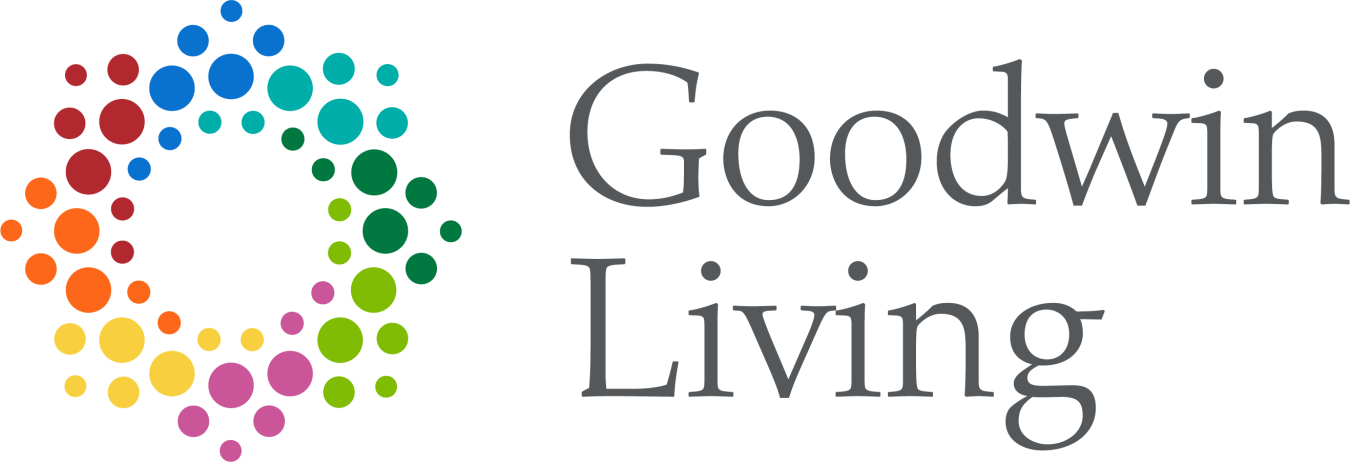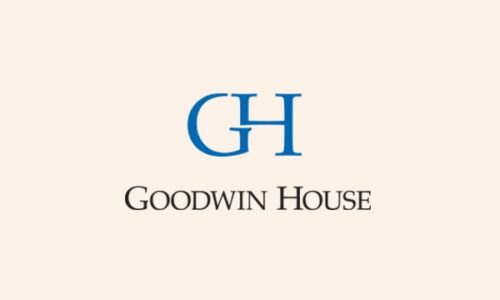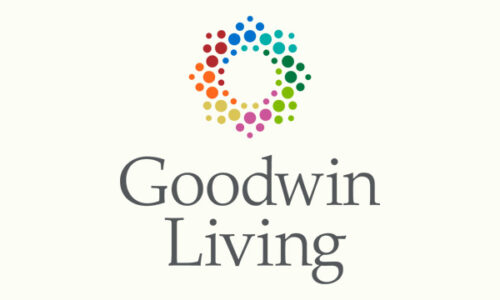March 15, 2021
Anatomy Lesson: The Hips and Glutes
Our Center for Stability and Weight-Bearing
by Leslie LaPlace
As we continue to build our foundational understanding of human anatomy from the ground up, we arrive at the hips and glutes. We have covered the foot and the ankle and the legs. This part of our anatomy is much more complex in musculature. Keeping our hips and gluts healthy as we age can lend not only to increased stability, it might help keep us from the mental and emotional effects of a hip fracture in our later years.
In addition to connecting our upper body with our lower body, the hips are designed for stability and weight-bearing. The glutes do their part by helping to move and stabilize the hips.
Let’s take a look at the muscles and bones of the hips and glutes and how they work together. I’ll also touch on some common problems and offer exercises and stretches to strengthen these areas (so keep reading to the end for those video links).
Let’s start by looking at the structure of the hips.
Basic Skeletal Structure of the Hips
The hip is formed where the thigh bone (femur) connects with the three bones of the pelvis: the ilium, the pubis (pubic bone) and the ischium. These three pelvic bones form the acetabulum, a deep socket where the top of the thigh bone (the ball) fits into the socket. We commonly refer to putting our hands on our hips, though, technically, our hands are often placed on the ilium, not the hip, when we strike that pose.
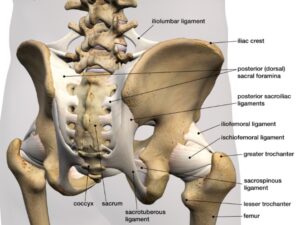
The actual hip is where the head of the thigh bone meets the pelvis. The outside bony prominence of the thigh bone is the greater trochanter. This is the prominent part of your hip that you can actually feel on the outer part of your thigh. The lesser trochanter, on the inside, serves as the attachment site of the iliopsoas tendon, one of the muscles that allows you to bend your hip. The lowest part of the ischium is most commonly referred to as the “sit” bones (ischial tuberosity), and they absorb your weight when sitting.
Basic Musculature of the Hips (and Other Fun Stuff)
When talking about the hip muscles, we refer to a broad group of almost twenty different muscles that enable the full range of motion of the ball and socket joint of the hip:
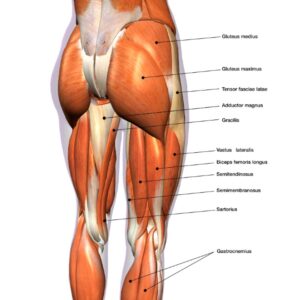
- Hip flexion and extension – moving the leg forward and backward
- Hip abduction and adduction – moving the leg out to the side (abduction) and inward toward the other leg (adduction)
- Rotation – pointing toes inward (internal rotation) or outward (external rotation) and then moving the straightened leg in the direction of the toes
Muscles surrounding the hip joint include:
- Gluteal muscles, located on the back of the hip (buttocks)
- The adductor muscles on the inner thigh bring the leg back to the center when out to the side
- The iliopsoas muscle, which extends from the lower back to upper thigh bone (femur)
- Quadriceps, a group of four muscles that comprise the front of the thigh
- Hamstrings, a group of muscles that comprise the back of the thigh and extend to just below the knee
I discussed the quadriceps and hamstrings in Part 2 of this series. To keep from getting into the weeds, I’m going to highlight a few of the other major muscles involved in hip motion:
- Iliopsoas (commonly referred to as the psoas): Refers to the joined psoas and the iliacus muscles. The two muscles are separate in the abdomen, but merge in the thigh. The iliopsoas is the body’s most important hip flexor, allowing you to move your leg forward. If you spend the majority of the day sitting down, the muscle becomes shorter, tilting the pelvis. This can change how you walk and contribute to lower back pain.
- Gluteal Muscles (the “glutes”): These muscles act on the hip joint to produce extension (leg back), rotation and abduction (leg out to the side). The glutes are also important for stability of the hip joint, which contributes to better posture and balance overall. Strong glutes, strong body. There are three muscles that make up the glutes:
- Gluteus Maximus: Not a character in a gladiator movie; this is the primary muscle for bringing the leg back – you can feel the large muscle in the buttock area pull as you walk. The angle of hip extension is important – a larger angle helps to prevent falls. Fun fact: While the average young adult extends the hip by approximately 20 degrees at a comfortable walking speed, elderly people have been reported to have an extension angle as low as six degrees. The gluteus maximus is also the major muscle used when externally rotating your leg.
- Gluteus Medius and Minimus: These are the main abductors of the hip —that is, they move the leg out to the side. They also are the main internal rotators of the hip (i.e. turning your foot inwards). The gluteus medius and minimus are also important stabilizers of the hip joint and help to keep the pelvis level as we walk, or when we stand on one leg.
- Tensor Fascia Latae (TFL): The TFL, along with the gluteus medius and minimus, is key for stabilizing the pelvis when standing on one leg. It also assists in hip flexion, internal rotation and abduction. The TFL, along with the gluteus maximus, attaches to the IT band. It can play a role in pain and dysfunction in the lower limbs, pelvis and spine.
- Iliotibial (IT) Band: Not a group of computer experts with musical instruments, this long piece of connective tissue, or fascia, runs along the outside of your leg from the hip to the knee and shinbone. The IT band helps to extend, abduct and rotate your hip. It also helps to stabilize the knee joint. Tightness in the IT band is a common cause of outside hip, thigh and knee pain.
- Piriformis: The piriformis is a small muscle located deep in the buttock, behind the gluteus maximus. It runs from the lower spine to the upper surface of the thigh bone, with the sciatic nerve running underneath or through the muscle. The piriformis muscle helps rotate the hip. The location of the piriformis muscle near the sciatic nerve means that when the piriformis muscle is irritated or injured, it can affect the sciatic nerve as well.
- Ligaments and tendons: These are tough, fibrous tissues that bind bones to bones and muscles to bones. Strong and flexible ligaments and tendons provide structure to the hip, reducing strain on the joint, so most hip osteoarthritis therapies will include stretching and strengthening of these structures. Tightness can contribute to hip instability and pain.
- Bursae: These are sacs filled with synovial fluid, often found near joints. Their function is to lubricate, reducing friction between tendons, ligaments and bones. There are as many as 20 bursae around the hip and inflammation or infection of the bursa is called bursitis.
Working Together to Stay Stable
Hopefully you’re starting to see how our bodies function as well-oiled machines—we just need to remember to keep them oiled!
Hip problems occur when any one of these components starts to degenerate or is in some way compromised. And, when the hip joint becomes inflamed and painful, you might feel pain in your back, buttocks or down your leg.
One of the things you can do to prevent this is to care of your glutes and hip flexors (psoas, quadriceps) as they are responsible for powering almost every movement we perform, whether that be running, jumping or walking. When our glutes and hip flexors are strong and flexible it allows us to perform the movements of daily life efficiently and without pain. Sitting for long periods of time causes your hip flexors to become shortened and eventually weaken because they’re not being used. When the hip flexors are “turned on” as you’re seated, the opposite muscles – the glutes – will relax and, over time, weaken as well.
So, what can you do to help keep the hip area strong and flexible to allow for optimal mobility? You can start by following me in this video as I walk you through exercises and stretches that you can do to help keep your hips healthy. You can also watch this educational video on sciatica piriformis.
Let’s hear hip, hip hooray for our wonderful hips.
As always, this advice should not take the place of contacting a medical professional in the event you are experiencing any pain or discomfort. Before engaging in any exercise routine, please consult your doctor.
Leslie LaPlace, Fitness Manager at Goodwin House Alexandria, is self described recovering Software Development Project Manager. Leslie parlayed a lifelong love of and belief in the restorative power of exercise into a satisfying career working with adults ages 55 and older. She believes that staying active can help reduce aches and pains—It’s also a great anti-aging remedy. She has more than six years’ experience working with seniors at Arlington County, The Jefferson, Goodwin House Bailey’s Crossroads and Goodwin House Alexandria. Leslie is a certified personal trainer and aquatic instructor who loves creating a positive and fun training experience. She believes that it’s never too late to improve your strength and balance!
